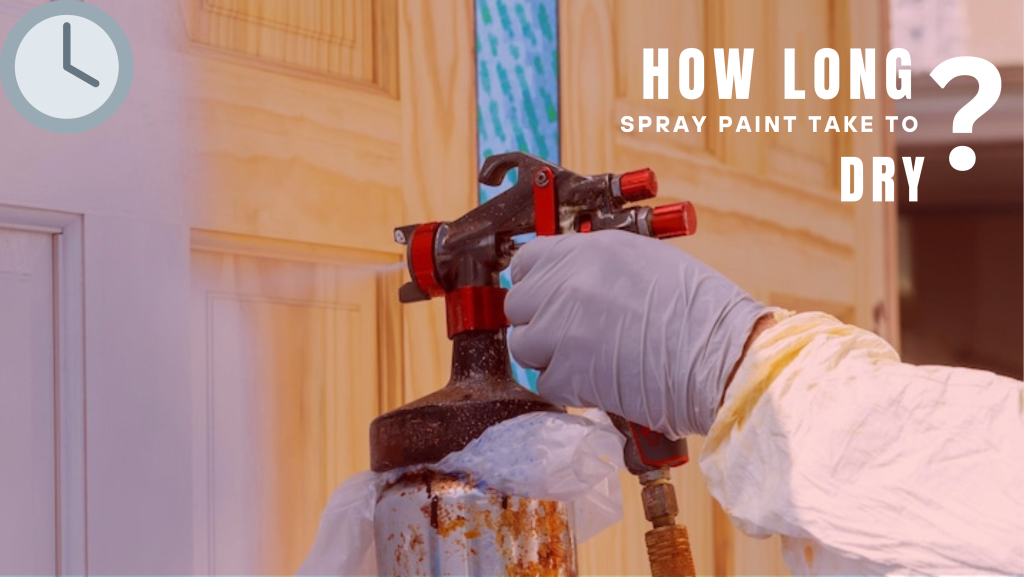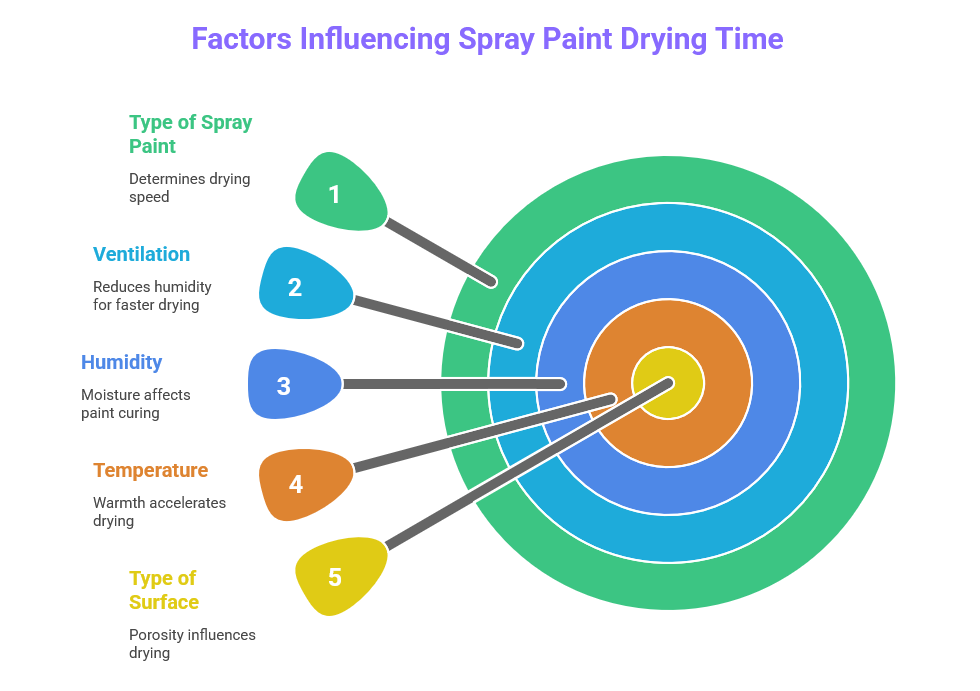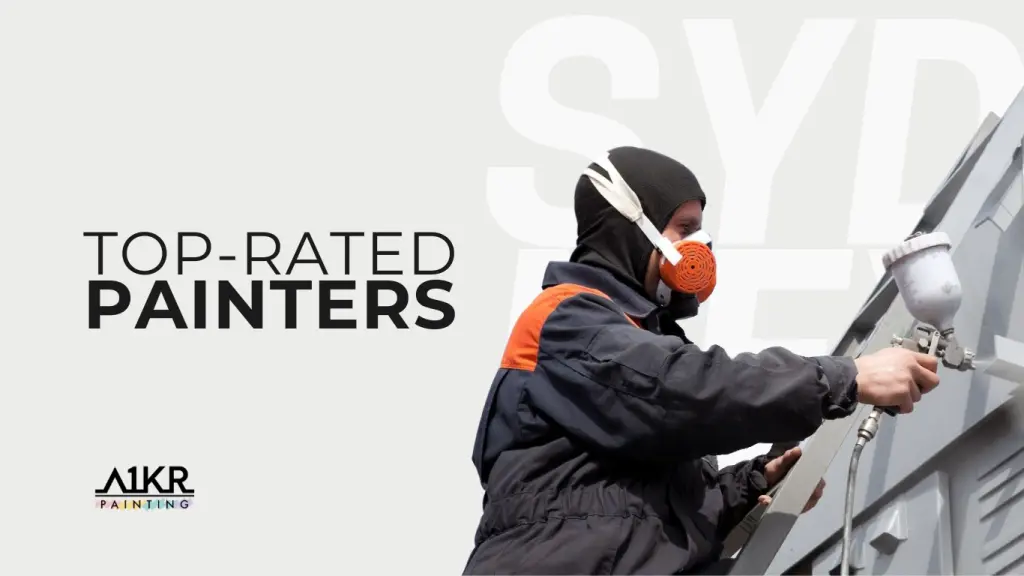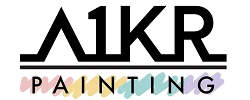
You’re staring at your just-spray-painted wooden furniture and counting down the hours. Spray painting is a fast and simple fix to your home revamp project. However, it needs time and even more patience than you think.
Knowing how long a spray paint takes to dry is one of your biggest battles. So, before jumping right into your latest DIY project, learn the spray paint dry times and how to make them faster.
What Happens When Spray Paint Dries
From the outset, spray painting may look easy, but in truth, it’s more complex than just spraying colours.
Here are the drying time stages of spray paints:
Surface Dry
This is where the top layer of your paint starts to stiffen and harden. Although it looks dry on the surface, the paint underneath is still not cured.
Touch Dry
The second stage of drying has reached the touch-dry phase. This means that it’s safe for you to lightly touch it without leaving a fingerprint.
However, the layers underneath are still not fully cured and not ready to take in the next coat.
Hard Dry
At this stage, the deeper layers of your paint have dried. Finally, you can put more pressure on the surface without leaving fingerprint dents or marks.
Although it feels more solid, the paint is still not strongly bonded to the surface.
Fully Cured
At last, your paint has fully cured and adhered to the surface. All the layers have completely dried, which means it’s ready for everyday use.
What Slows It Down (or Speeds It Up)

Type of Surface
The material and texture of the surface affect the drying time of the spray paint. For instance, woods are porous; they have pores to absorb the liquid, resulting in fast drying.
In contrast, metals are non-porous, which are non-permeable. They don’t have pores to let the liquid pass through, making the drying time longer.
Temperature
The temperature also influences the spray-painting drying time. When it’s warm, the paint dries more quickly. Conversely, when it’s cooler, the paint dries more slowly.
The best time to avoid issues is to have your spray-painting project during spring or fall.
Humidity
It takes longer for spray paints to cure when you opt to paint when humidity is higher. There’s too much water in the air, causing moisture that unsettles the painted surface.
Ventilation
When there’s proper airflow in the surrounding area, humidity is reduced. Therefore, the moisture is less, allowing the paint to stick to the surface faster and evenly.
Type of Spray Paint
Acrylic paints that are water-based are fast-drying compared to oil-based paints which are the slowest liquid medium for drying.
Pro Tips to Help It Dry Faster
Use thin Coats
Apply thin coats; going thick with your coats makes the drying process slower.
Allow Time Between Sprays
By allowing the first coat of paint to dry, you’re creating a solid surface for the next paint to stick to.
Move Indoors or Use Fans
You can use fans to remove the moisture in the air and fast-track the drying process. You can also move indoors where the humidity is lower, speeding up the paint curing time.
Use Drying Boosters
If it’s suitable, you can use drying agents such as a fast-drying epoxy or polyurethane spray paint. These products have compositions that make certain the paint cures to the touch in just a few minutes.
Avoid These Drying Time Mistakes
Don’t Rush Coats
If you spray the next coat of paint on a still wet previous coat, the paint might run and bubble.
Be patient and wait for the paint to dry properly before adding another layer.
Don’t Paint in Bad Weather
Weather plays an important role in how fast or slow your paint dries. When it’s warmer, the air holds more moisture, accelerating the drying time.
Don’t Overload the Spray Layer
Thinner is better. Use thin coats and slowly build on it. This allows each layer of paint to dry perfectly, resulting in an incredible finish.
Don’t Ignore Recoat Instructions
The instructions on your paint products are there to serve as your guidelines, so use them. There are specific time windows for you to follow to avoid painting mistakes and ensure a flawless finish.
Knowing When It’s “Dry Enough”
When to Recoat Safely
Allow drying times between each layer. Most paints usually take an hour up to 24 hours to dry to the touch. Remember, if you recoat too early, the paint might turn out wrinkled and coarse.
When You Can Use the Item (And When to Wait)
The paint might appear dry, but when you touch it, the deeper layers are still unsettled. So, how can you really tell?
It’s dry enough when you can gently touch it without leaving marks after a few hours.
Generally, when you wait a day, it’s ready for light use. More than 24 hours; by then the paint has fully cured and can withstand friction-heavy contact.
Simple Tests
You can delicately press test the surface with a gloved finger. If you see marks, then perhaps it’s not dry enough.
You can also try to sniff it. When the paint still has a very strong fume, chances are, the curing process is ongoing.
A One Korean Painting Can Help

At A One Korean Painting, we have experts who can deal with all surfaces and paint types.
No matter how small or big the work is, we carry out the same high standards, ensuring value and appearance. Our efforts are directed to giving you the results you deserve—reliable and quick.
Conclusion
As you already know, spray painting is not really a straightforward fix. You need more time and patience to succeed in it.
So, for bigger and more sensitive spray-painting jobs, we encourage you to call in the pros. An expert brings the right tools and knowledge to handle intricate painting projects with precision.
Reach out to us and let us help you avoid the drips and costly do-overs!

